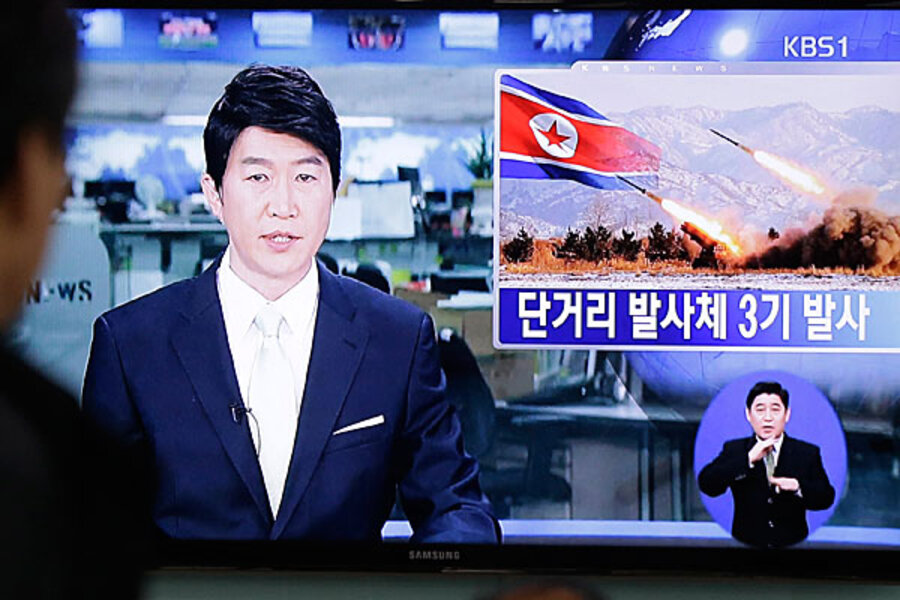North Korea fires three short-range missiles. Why?
Loading...
| Seoul, South Korea
North Korea fired three short-range guided missiles into its eastern waters on Saturday, a South Korean official said. It routinely tests such missiles, but the latest launches came during a period of tentative diplomacy aimed at easing tensions.
The North fired two missiles Saturday morning and another in the afternoon, South Korean Defense Ministry spokesman Kim Min-seok said by phone. He said the North's intent was unclear. His ministry said it is watching North Korea carefully in case it conducts a provocation against South Korea.
In March, North Korea launched what appeared to be two KN-02 missiles off its east coast. Experts believe the country is trying to improve the range and accuracy of its arsenal.
North Korea recently withdrew two mid-range "Musudan" missiles believed to be capable of reaching Guam after moving them to its east coast earlier this year, U.S. officials said. The North is banned from testing ballistic missiles under U.N. Security Council resolutions.
Earlier this year, North Korea threatened nuclear strikes on Seoul and Washington because of annual U.S.-South Korean military drills and U.N. sanctions imposed over its third nuclear test in February. The drills ended late last month. This past month, the U.S. and South Korea ended another round of naval drills involving a nuclear-powered aircraft carrier off the east coast. North Korea calls such drills preparation to invade the North.
Analysts say the recent North Korean threats were partly an attempt to push Washington to agree to disarmament-for-aid talks.
This past week, Glyn Davies, the top U.S. envoy on North Korea, ended trips to South Korea, China and Japan. On Friday, an adviser to Japanese Prime Minister Shinzo Abe returned from North Korea but didn't immediately give details of his talks with officials there.
On Monday, North Korean state media showed that the country's hard-line defense minister had been replaced by a little-known army general. Outside analysts said it was part of leader Kim Jong Un's efforts to tighten his grip on the powerful military after his father Kim Jong Il died in December 2011.
The United States and Japan are participants in six-nation nuclear disarmament talks along with the Koreas, Russia and China. North Korea walked out of the talks in 2009 after the United Nations condemned it for a long-range rocket launch.
North Korea possesses an array of missiles. U.S. and South Korean officials do not believe the North's claim that it has developed nuclear warheads small enough to place on a missile. Last week in Washington, South Korean President Park Geun-hye and President Barack Obama warned North Korea against further nuclear provocations.
Tension between the two Koreas remains high after both sides pulled out their workers from a jointly run factory complex earlier this year. The countries remain technically at war after the 1950-53 Korean War ended in a truce instead of a peace treaty.
Copyright 2013 The Associated Press.







